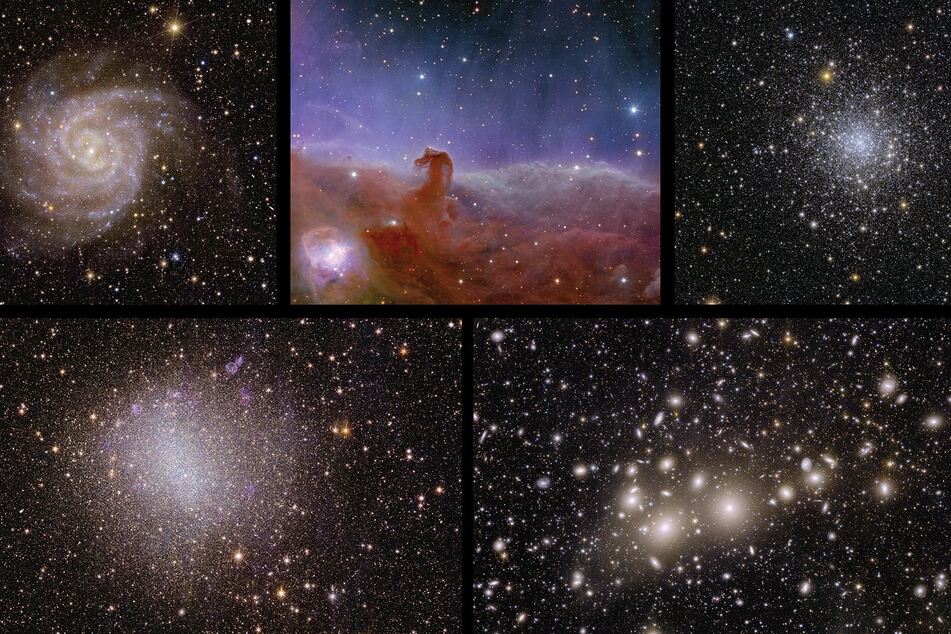First images from European space probe Euclid mark "revolution for astronomy"
Paris, France - The first images from the European probe Euclid are providing a "revolutionarily" detailed view of space.

"Never before has a telescope been able to capture such razor-sharp astronomical images over such a large portion of the sky and look so far into the distant universe," the European Space Agency (ESA) announced on Tuesday.
The first images from the probe were displayed at the European Space Operations Centre in the German city of Darmstadt and at the Space Summit in Seville in Spain.
The probe is intended to collect data on billions of galaxies, including for the study of dark matter and dark energy.
The pictures show, amongst others, the Perseus Cluster in the constellation Perseus. According to the ESA, the image is a "revolution for astronomy," depicting 1,000 galaxies in the cluster and more than 100,000 more distant galaxies in the background.
Many of these faint galaxies were previously not visible. Euclid also captured a stunning image of the famous Horsehead Nebula.
What is the purpose of the European Space Agency's Euclid probe?
The Euclid probe was launched into space in early July, equipped with a high-resolution telescope and two cameras: one for the visible wavelength range and one for the near-infrared range. The cameras are intended to capture the movements and shapes of galaxies and help estimate the distance to galaxies.
The ESA aims to take a look into the past of the universe and explore its development over the last 10 billion years. In total, data on billions of galaxies will be collected, creating a three-dimensional map of the universe with time as a component.
"These exquisite Euclid images show that the mission is ready to help provide answers to one of the greatest mysteries of modern physics," ESA's Director of Science Carole Mundell said.
Dark matter and dark energy together are believed to make up an extremely large portion of the universe. All other known components, such as galaxies, make up only about 5%, it is thought.
According to the ESA, Euclid will record the shape, position, and motion of galaxies in detail. This could provide insights into how matter is distributed in space over vast distances and how the expansion of the universe has evolved throughout cosmic history.
Astronomers hope that this information will allow them to draw conclusions about the properties of dark energy and dark matter.
Cover photo: Screenshot/X/@ ESA's Euclid mission
